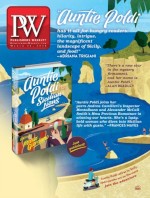The Lithuanian language still retains an archaic nature: it is the most archaic and conservative form of the still used Indo-European languages," says Professor Pietro U. Dini, translator of Lithuanian poetry. It is a glottosaur—a linguistic dinosaur that is alive and kicking and has been one of the official languages of the European Union since May 1, 2004.
Less than three million Europeans speak Lithuanian, yet there remains a thriving literary culture in Lithuania supported by a vibrant publishing industry.
Publishing in Lithuania over the years of independence has faced the same challenges as its counterparts in Eastern Europe, including the deterioration of the old publishing structures, the formation of new ones, the boom of the early 1990s, and the bust following the 2008 and 2009 financial collapse.
A Burgeoning Market
Lithuanian publishers have proved their ability to find their place in the market economy and to make a substantial contribution to it's development. Publishers have taken a leading role in education and the culture of the new Lithuania, despite its small market and unique language.
The restoration of Lithuania's independence forced the transition to a market economy, and the process was facilitated and sped up by the rapid changes in political and social life, the easing of censorship, and the amendment of laws related to publishing.
Publishing became one of the most profitable industries in the early '90s. Growth stalled in 1999, after a crisis in Russia that year, as well as in 2008, after which we saw a contraction and concentration in publishers and booksellers.
According to the most recent statistics from the National Library, in 2016 there were some 509 organizations and enterprises that acquired ISBN numbers, thus earning the designation of "publisher." Alas, a more realistic view demonstrates that there are just 65 Lithuanian publishing houses that have put out more than 10 books per year. These houses published more than 3,400 new titles in 2016, with a circulation of 4.6 million copies.
Publishers in Lithuania tend to be small, employing three or four full-time staffers on average. But there is one clear market leader: the Alma Littera Group, which includes the dominant Šviesa publishing house. Between 2012 and 2016, this group produced 23% of the sector's total units. Its closest competitors, including the Baltų Lankų Leidyba, Obuolys, Svajonių Knygos, and Tyto Alba, published just 4%–5% of the overall book circulation.
Book Sales and Bookselling
Literature by Lithuanian authors accounts for approximately two-thirds of all book titles and approximately half of the annual circulation. In recent years, these books have also dominated the bestseller lists.
Translations continue to be important, with the most popular titles coming primarily from English-speaking countries, including Australia, Canada, Ireland, the United States, and the United Kingdom. These books account for 43% of all translations.
Traditionally, the main sales channel for books is bookstores. As of 2016, there were 144 bookstores in Lithuania, where two major chains dominate sales: Vaga, which has 35 bookstores, and Pegasas, which has 33 bookstores. The remainder, some 55% of bookstores, are smaller independents, which are fighting for survival. The most successful independent stores, like others around the world, rely on their individual relationships with customers and positions in the community. Libraries also play an important, supplementary role, both for readers and for publishers. In 2016, there were 2,500 libraries in Lithuania (down from 2,800 in 2008).
Competition for Readers
The competition for readers is fierce. The pace of modern life, with its myriad digital distractions and other leisure activities, has meant that the industry has largely shifted to the support of older readers. Today the main Lithuanian buyers of books are citizens between the ages of 30 and 50. They have stable purchasing power and are accustomed to buying print books. Younger generations have different interests, and publishers are still testing the market and trying to find creative and effective solutions for expanding readership to this new market. E-books are one option, but they have had little traction in Lithuania thus far, and the majority of digital books are textbooks and other educational purposes. Audiobooks have had minimal impact on the market.



 Volume 265
Issue 13
03/26/2018
Volume 265
Issue 13
03/26/2018





